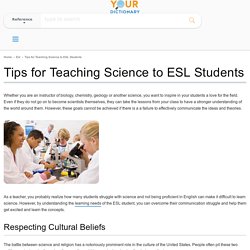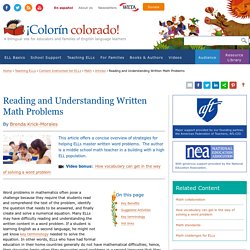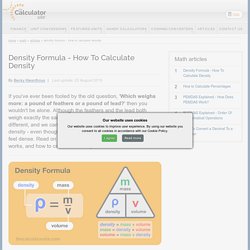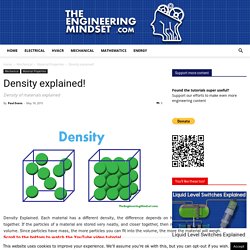

TEKS. Youtube. Tips for Teaching Science to ESL Students. Whether you are an instructor of biology, chemistry, geology or another science, you want to inspire in your students a love for the field.

Even if they do not go on to become scientists themselves, they can take the lessons from your class to have a stronger understanding of the world around them. However, these goals cannot be achieved if there is a a failure to effectively communicate the ideas and theories. As a teacher, you probably realize how many students struggle with science and not being proficient in English can make it difficult to learn science. However, by understanding the learning needs of the ESL student, you can overcome their communication struggle and help them get excited and learn the concepts.
Respecting Cultural Beliefs The battle between science and religion has a notoriously prominent role in the culture of the United States. A Guide to Giving Clear Instructions to Students (That They Will Actually Follow) Teachers are sometimes surprised to discover just how much giving clear instructions to students can affect students' success in the classroom.

When given effective directions, students can engage with the material more effectively and ultimately have more productive experiences. There are several steps teachers can take to ensure that their students understand instructions and are able to complete assignments with ease. 1. Use Clear and Precise Language Thirty-three years ago, Chilcoat and Stahl wrote the definitive framework for giving clear directions. Further Reading: A 'how to' for aspiring teachers. Teachers should also clearly articulate the expectations of the assignment or task. 2. We assume that our students listen when we speak—but anyone who has been teaching for more than five minutes knows this isn't always the case. 3. 20 ways teachers can give differentiated instructions to students. There are so many different classroom teaching strategies.

Think about blended learning, microlearning, mastery learning, individual teaching, flip the classroom, project-based learning and so on. No matter what method you choose, your job stays the same: teach students. It’s proven that direct instruction and instructing students at the beginning of a lesson is the most effective strategy when it comes to teaching. AVID Socratic Seminar. Go from "Crickets" to "All Hands in the Air": How to Motivate Students to Speak English. Imagine walking into class with a great lesson prepared.

You have an awesome speaking activity that you know your students will relate to. After explaining the activity, you ask for volunteers. As usual, though, only Super Student Sally raises her hand. “Who else wants to volunteer?” You ask. Crickets. “Anybody?” Funny how students love talking when you want them to listen, but when it’s time for them to speak, there’s nothing but silence. Speaking in a foreign language can be intimidating, which is why students need lots of practice in class. If only you could pull the words out of them and make them talk! The Approachable Guide to Teaching Math in ESL Classes. When does 1 + 1 add up to way more than two?

When you combine ESL and math! Whether you are an ESL teacher adding math to your curriculum or a math teacher with ELL students in your classroom, you are in luck. Here’s why: Teaching two subjects at once isn’t the juggling act it sounds like. In fact, if you have the tools you need to succeed, teaching math and ESL together can be an incredibly rewarding experience, both for you and for your students. Reading and Understanding Written Math Problems. Word problems in mathematics often pose a challenge because they require that students read and comprehend the text of the problem, identify the question that needs to be answered, and finally create and solve a numerical equation.

Many ELLs may have difficulty reading and understanding the written content in a word problem. If a student is learning English as a second language, he might not yet know key terminology needed to solve the equation. In other words, ELLs who have had formal education in their home countries generally do not have mathematical difficulties; hence, their struggles begin when they encounter word problems in a second language that they have not yet mastered (Bernardo, 2005).
Density Lab. Lab Ideas for Teaching Density - WELCOME TO SCIENCE LESSONS THAT ROCK. How to Help Students Who Struggle with Word Problems. Density Formula - How To Calculate Density. If you've ever been fooled by the old question, 'Which weighs more: a pound of feathers or a pound of lead?

' then you wouldn't be alone. Although the feathers and the lead both weigh exactly the same (um, a pound), their density is wildly different, and we can sometimes mentally conflate weight and density - even though they're different concepts. So - hey - don't feel dense. Read on to find out exactly what density is, how it works, and how to calculate density. What is density? Density is the mass per volume - not just the straight-up mass. Following instructions. Discussion.
Introduction to long division. Density explained! - The Engineering Mindset. Density Explained.

Each material has a different density, the difference depends on how the materials particles are packed together. If the particles of a material are stored very neatly, and closer together, then more particles will be able to fit into the volume. Since particles have mass, the more particles you can fit into the volume, the more the material will weigh.Scroll to the bottom to watch the YouTube video tutorial Density is just a measurement of how much mass is in a given volume. We measure density in the SI units of kg/m3 (kilograms per cubic meter) usually density is listed as the Greek symbol Rho ρ. Good news! If you find this page useful, please like, share and comment. Densitycolumn. Density - Explained.